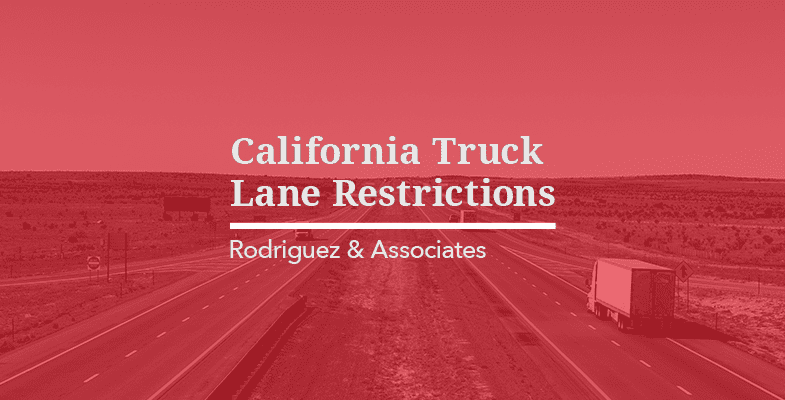It is an unfortunate reality that smaller, lighter passenger vehicles must drive alongside large, heavy commercial trucks to fuel America’s economy. Big rigs can weigh up to 80,000 pounds, while the average passenger vehicle weighs just 3,500 pounds. The immense size difference between the two can lead to major damage to the smaller car and its passengers in a collision. The State of California strives to reduce the number of truck accidents on its highways by enacting truck lane restrictions. Learning the law can help you stay as far away as possible from large trucks when on California’s highways.
Truck-Only Lanes in California
Very few truck-only lanes exist throughout the country. In most states, large trucks and passenger vehicles must intermingle, but trucks must simply stay out of the left lane on certain highways. California, however, has two truck-only lanes in existence and more potentially on the way. As of now, the two lanes that only trucks may operate in are as follows:
- Northbound and southbound 1-5 in LA County at the State Route 14 split. The truck lane begins as two roads, northbound at LA County postmile C043.925 and southbound at postmile C043.899. Both roads meet at postmile C044.924. These trucks lanes separate slower-moving large trucks from the general traffic that moves faster. The roads run 2.426 miles northbound and 2.452 southbound. This truck-only road has been in existence for about 30 years.
- Southbound I-5 in Kern County at the State Route 99 junction. On Route 99 near the Grapevine, postmile L000.629, a truck-only lane begins. The lane continues for 0.346 miles until I-5 at postmile R-15.492. The point of the lane is to allow large trucks to merge farther downstream of where other vehicles merge between I-5 and State Route 99. This truck-only lane could potentially prevent collisions between trucks and smaller vehicles in an already difficult merge area.
All large trucks must travel in truck-only lanes when they arise. There are black and white highway signs indicating where truck-only lanes begin and end. These are enforceable signs that all truck drivers must obey. Failure to use truck-only lanes when available can result in fines. Passenger vehicles may technically drive in truck-only lanes, but green highways signs encourage them not to do so. Since the signs are green, they are not enforceable.
Large Trucks in the Left Lane
California sees a particularly large number of commercial trucks on its roadways. For this reason, the state has enacted somewhat strict rules when it comes to large trucks on the highway. California is one of few states with a law that prohibits “motor trucks, truck tractors with three axles or more, and truck tractors pulling vehicles” from driving in the left-hand lane while on the highway. These slower-moving vehicles must remain in the right-hand lane or the second-right-hand lane if on a highway with four lanes of traffic moving in the same direction.
If a large truck disobeys lane restrictions, the driver could receive fines of up to $250 for a third offense within one year. Any slower-moving vehicle, regardless of size, must use the furthest right-hand lane while driving in California, except when passing or making a left turn. The California Highway Patrol enforces truck lane restrictions and will stop large trucks should they disobey the law.
